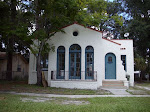This afternoon, Da’Sean was looking for something to do so he decided to take the neighborhood camera and photograph the houses on our block. Here’s what he came up with:
These pics communicate a lot about the street we live on. They show that we live in mostly single-story, single-family homes, with driveways, front lawns and greenery. They show that yards on our street are generally well-kept, though not typically pumped up with sprinkler systems or fertilizer. They show that front porches and front stoops are pretty common, with some folks preferring to keep neighbors at a distance with fences while other folks welcome people to stop by and chat.
“Housing conditions” are often recognized as an environmental domain that influences child well-being.
Typically, though, measures and indicators of housing are problem-focused. Take, for example, this report titled, “
Doing Better for Children,” issued last year by OECD, the Organisation for Economic Co-operation and Development.
Indicators include things like “overcrowding,” “noise levels,” “litter," "dirt and grime,” and “vandalism.”
What if instead we were to see housing quality through the eyes of our neighborkids, and find corresponding positive indicators? Things like “outdoor play space,” “opportunities for gardening,” “spots to chat with neighbors” and “welcome signs?” What might we better notice by focusing on the positive, the way kids do?






















